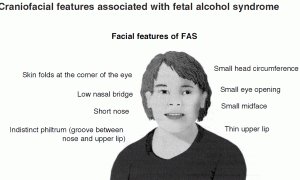
A firm definition of cerebral palsy is difficult to come by. The truth is that it’s not just one condition or disease, but rather, a broader term that is used to refer to a whole range of conditions.
In the strictest sense, cerebral palsy refers to non-contagious motor conditions, which lead to physical disability and impaired body movement. While it is not just one specific condition, or even a few specific conditions, we can nevertheless try to form a more complete understanding of cerebral palsy by considering the following.
The Term
Starting with the terminology, cerebral comes from cerebrum, which would be the part of the brain affected by cerebral palsy. Palsy refers to disorder in physical movement, but the word is traditionally defined as referring to paralysis. This should help us understand the term and how it is used.
Though cerebral palsy does not refer to a specific disease or condition, it does refer to a specific effect: movement disorder linked to the cerebrum.
Symptoms of Cerebral Palsy
Although there are as many different variations of cerebral palsy as there are people suffering from it, there are certain universal symptoms that can be found in every case.
Primary Symptoms
You won’t find someone suffering from the condition who does not exhibit abnormal muscle tone. This can be expressed in the form of heavy slouching when the individual is seated. This can also express itself in the form of poor reflexes, weak coordination and poor motor development.
Facial tics and other involuntary gestures may be present, as well, as may scissor walking, wherein the knees come in and cross one another while the individual is walking.
Abnormal muscle tone may express itself differently in every individual, but it ranges from simple clumsiness to outright severe physical disability.
Secondary Symptoms
Secondary symptoms of CP may include a number of things. Epilepsy, seizures, sensory impairment, intellectual and learning disabilities, incontinence and behavioral disorders all may stem from CP in affected individuals, although it is possible for the two to be unrelated.
Speech is a common CP symptom, linked to poor respiratory control and poor muscle control. Because the facial and larynx muscles are so important to speech, and because CP frequently impairs the full range of motion for these muscle groups, it isn’t always easy for those suffering with CP to freely communicate.
Long term effects of CP can be severely detrimental beyond physical disability. Children who have CP, for instance, may find themselves in the position of being coddled and developing learned helplessness, never fully exploring their own capabilities and committing to a lifetime of dependency.
Other long term effects can include poor bone growth, as proper muscle tone is vital for proper bone development. Sleep and pain disorders may also develop.
Causes of CP
Cerebral palsy can stem from a number of root causes. These may include asphyxia before birth, or other conditions that result in the unborn child’s brain not receiving enough oxygen. CP is common in multiple births due to the physical conditions that can arise from multiples.
Close to half of all children who were born with CP were born prematurely. Premature birth puts a child at higher risk due to underdeveloped organs, which can lead to hypoxic injury to the brain. Children with CP also have lower birth weights at a higher rate than children without CP. This, too, can point to underdeveloped organs.
Generally speaking, CP is thought to be congenital, as in it is a condition that is from birth, although this is not a rule, and some may develop the condition in adulthood or later childhood.
Preventing and Managing CP
Although proper natal care may help to reduce the risk of CP, it would be irresponsible to suggest that CP is a wholly preventable condition, but it would be equally unwise to imply that it is an unmanageable one. Many who live with CP may live perfectly normal lives – with CP being just one of many things that they must deal with in a day.
Methods for dealing with CP may include the following:
Therapy
Therapy is perhaps most important for helping to develop better muscle tone and to help train those with CP to make the most of their limited range of motion.
Consider, too, that communication is difficult for those with CP, and social skills can suffer for it. Interpersonal therapy can be a tremendous help for people with CP to learn how to better communicate and interact with others.
Occupational therapy can help, as well, offering those with CP a chance to participate in the world around them, affected, but not limited by their condition.
Medication
Botox injections can help to manage pain, as spastic muscular movement can be quite painful.
Other medications may be prescribed to help manage the conditions associated with CP, but there is no medicinal treatment for the condition itself.
Surgery
Surgery is generally reserved for extreme cases. It may prove necessary to release fixed joints by loosening muscle tissue, straightening abdominal twists, and even cutting nerves that are affected by spasms.
CP can be frightening, but it is manageable. Head to the CDC for more information.
Learn More about Cerebral Palsy
To learn more about Cerebral Palsy, check out the following links.
1) United Cerebral Palsy
2) My Child – Cerebral Palsy
3) American Academy for Cerebral Palsy and Developmental Medicine
Have you or a loved one faced cerebral palsy? Share your experience and tips with us in the comments.




Leave a comment
You must login or register to add a new comment.